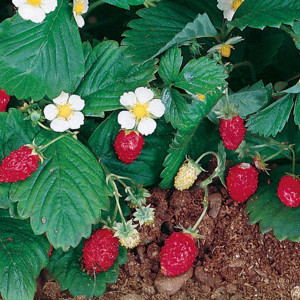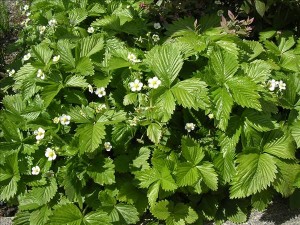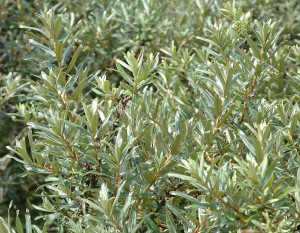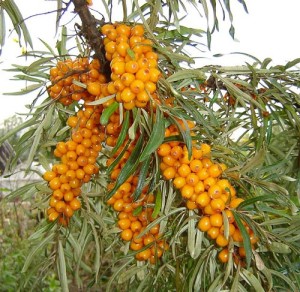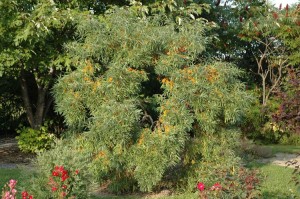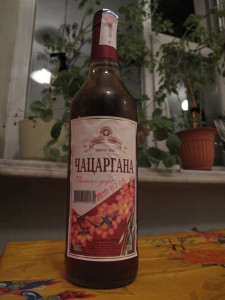Ecology
Fragaria vesca ssp. alpina, or alpine strawberry, is a prostrate fruiting herb that has been eaten by humans since the Paleolithic. Like a great many of our favorite cultivated plants (apples, pears, roses, plums, peaches, etc.), it is a member of the Rosaceae, or rose family. Alpine strawberry is a subspecies, or distinct strain, of the wood strawberry (Fragaria vesca) which is native to most parts of the Northern hemisphere. Alpine strawberries in particular come from the European Alps, where they have been esteemed for centuries – often depicted in medieval tapestries. Unlike other strawberries, alpines do not send out runners, instead remaining as a single clump. While other strawberries yield large numbers of fruits at a single time of the season, the alpine strawberry fruits all season long, albeit in smaller numbers. It is a woodland plant, preferring moist soil and dappled or part shade – plants will fruit with as little as 4 hours of sunlight.
In the garden
The non-spreading habit of alpine strawberries makes them excellent for use on the edges of borders. The leaves are evergreen, which helps avoid the “dead” look of many winter gardens. They are also very suitable for part shade, that being both a characteristic of most gardens in our region and of the alpine strawberry’s native habitat. The fruits are incredibly delicious: Edible Forest Gardens author Dave Jacke says, “…there is more strawberry flavor packed into one of these tiny fruits than in any number of enormous store-bought hybrids!” There are a number of cultivated varieties – one of my favorites is ‘Pineapple Crush’ – a nearly white colored strawberry with a hint of pineapple flavor, and the white color decreases the chance that birds will get the berries before I do! Alpines are also incredibly easy to start from seed, and grow fast – seeds started in the early spring will bear a small crop that season, and larger crops in successive years. Overall, alpine strawberries are a great, long-lived, low-maintenance perennial with superior fruit that can add much to any garden or edible landscape.

